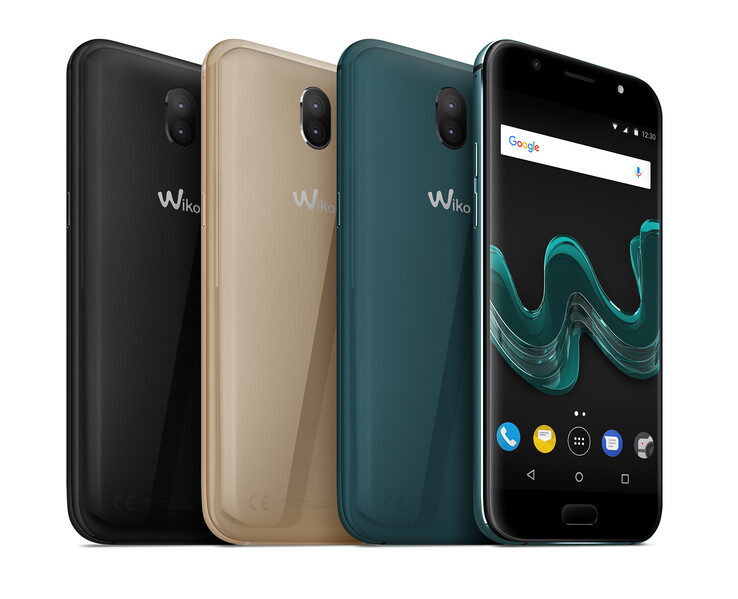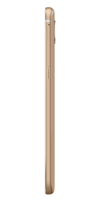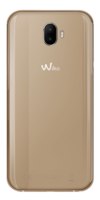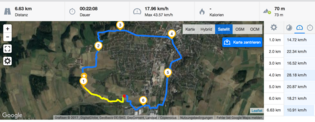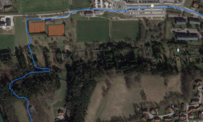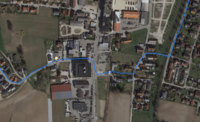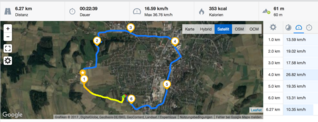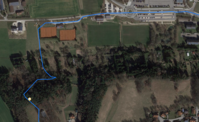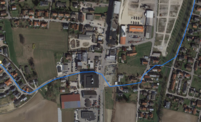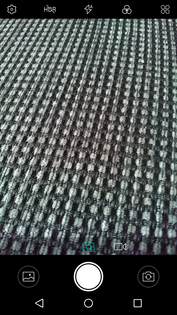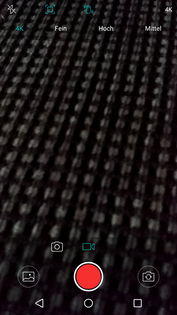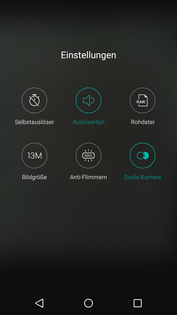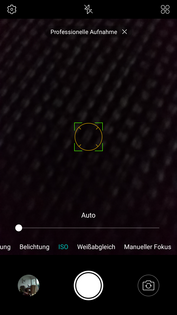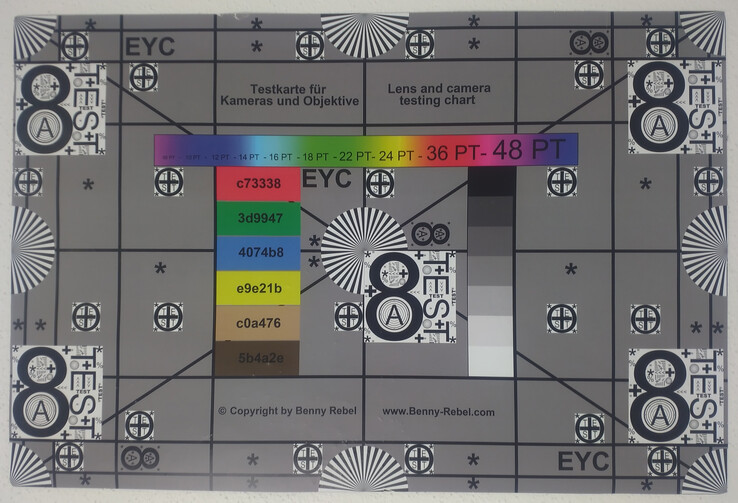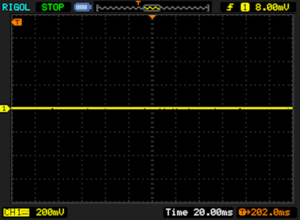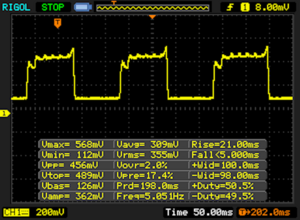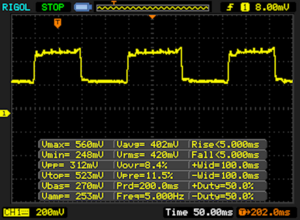Breve análisis del Smartphone Wiko WIM
Top 10 Análisis
» Top 10 Portátiles Multimedia
» Top 10 Portátiles de Juego
» Top 10 Portátiles de Juego ligeros
» Top 10 Portátiles Asequibles de Oficina/Empresa
» Top 10 Portátiles de Juego Ligeros
» Top 10 Portátiles de Oficina/Empresa Premium
» Top 10 Estaciones de Trabajo
» Top 10 Subportátiles
» Top 10 Ultrabooks
» Top 10 Convertibles
» Top 10 Tablets
» Top 10 Tablets Windows
» Top 10 Tablets de menos de 250 Euros
» Top 10 Phablets (>5.5")
» Top 10 Smartphones
» Top 10 Smartphones (≤5")
» Top 10 Smartphones de menos de 300 Euros
» Top 10 Smartphones de menos de 120 Euros
» Top 10 Portátiles de menos de 1000 Euros
» Top 10 Portátiles de menos de 500 Euros
» Top 10 Portátiles de menos de 300 Euros
» Los Mejores Displays de Portátiles Analizados por Notebookcheck
| Networking | |
| iperf3 transmit AX12 | |
| Xiaomi Mi 6 | |
| OnePlus 3T | |
| Wiko WIM | |
| HTC U Ultra | |
| LG G6 | |
| Samsung Galaxy A5 2017 | |
| BQ Aquaris X Pro | |
| iperf3 receive AX12 | |
| Xiaomi Mi 6 | |
| Wiko WIM | |
| LG G6 | |
| OnePlus 3T | |
| HTC U Ultra | |
| BQ Aquaris X Pro | |
| Samsung Galaxy A5 2017 | |
| |||||||||||||||||||||||||
iluminación: 90 %
Brillo con batería: 344 cd/m²
Contraste: ∞:1 (Negro: 0 cd/m²)
ΔE ColorChecker Calman: 5.7 | ∀{0.5-29.43 Ø4.78}
ΔE Greyscale Calman: 5.1 | ∀{0.09-98 Ø5}
99.5% sRGB (Calman 2D)
Gamma: 2.73
CCT: 7407 K
| Wiko WIM AMOLED, 1920x1080, 5.5" | BQ Aquaris X Pro IPS, 1920x1080, 5.2" | HTC U Ultra SLCD 5, 2560x1440, 5.7" | LG G6 IPS LCD, 2880x1440, 5.7" | Xiaomi Mi 6 IPS, 1920x1080, 5.2" | Samsung Galaxy A5 2017 Super AMOLED, 1920x1080, 5.2" | OnePlus 3T Optic-AMOLED, 1920x1080, 5.5" | |
|---|---|---|---|---|---|---|---|
| Screen | -14% | 3% | 33% | 31% | 56% | -8% | |
| Brightness middle (cd/m²) | 344 | 458 33% | 470 37% | 646 88% | 620 80% | 539 57% | 421 22% |
| Brightness (cd/m²) | 353 | 473 34% | 445 26% | 611 73% | 586 66% | 542 54% | 430 22% |
| Brightness Distribution (%) | 90 | 88 -2% | 88 -2% | 89 -1% | 89 -1% | 93 3% | 84 -7% |
| Black Level * (cd/m²) | 0.51 | 0.22 | 0.23 | 0.28 | |||
| Colorchecker dE 2000 * | 5.7 | 7.1 -25% | 5.5 4% | 4.5 21% | 4.8 16% | 1.6 72% | 7.1 -25% |
| Colorchecker dE 2000 max. * | 12.2 | 14.5 -19% | 11.9 2% | 8.3 32% | 8.8 28% | 2.6 79% | 15.3 -25% |
| Greyscale dE 2000 * | 5.1 | 10.5 -106% | 7.6 -49% | 6 -18% | 5.3 -4% | 1.5 71% | 6.8 -33% |
| Gamma | 2.73 81% | 2.28 96% | 2.2 100% | 2.27 97% | 2.25 98% | 2.28 96% | 2.23 99% |
| CCT | 7407 88% | 8951 73% | 7454 87% | 7996 81% | 7473 87% | 6422 101% | 7866 83% |
| Contrast (:1) | 898 | 2136 | 2809 | 2214 | |||
| Color Space (Percent of AdobeRGB 1998) (%) | 67.74 | ||||||
| Color Space (Percent of sRGB) (%) | 99.05 |
* ... más pequeño es mejor
Parpadeo de Pantalla / PWM (Pulse-Width Modulation)
| Parpadeo de Pantalla / PWM no detectado | |||
Comparación: 53 % de todos los dispositivos testados no usaron PWM para atenuar el display. Si se usó, medimos una media de 8108 (mínimo: 5 - máxmo: 343500) Hz. | |||
Tiempos de respuesta del display
| ↔ Tiempo de respuesta de Negro a Blanco | ||
|---|---|---|
| 26 ms ... subida ↗ y bajada ↘ combinada | ↗ 21 ms subida | |
| ↘ 5 ms bajada | ||
| La pantalla mostró tiempos de respuesta relativamente lentos en nuestros tests pero podría ser demasiado lenta para los jugones. En comparación, todos los dispositivos de prueba van de ##min### (mínimo) a 240 (máximo) ms. » 61 % de todos los dispositivos son mejores. Eso quiere decir que el tiempo de respuesta es peor que la media (20.2 ms) de todos los dispositivos testados. | ||
| ↔ Tiempo de respuesta 50% Gris a 80% Gris | ||
| 10 ms ... subida ↗ y bajada ↘ combinada | ↗ 5 ms subida | |
| ↘ 5 ms bajada | ||
| La pantalla mostró buenos tiempos de respuesta en nuestros tests pero podría ser demasiado lenta para los jugones competitivos. En comparación, todos los dispositivos de prueba van de ##min### (mínimo) a 636 (máximo) ms. » 22 % de todos los dispositivos son mejores. Esto quiere decir que el tiempo de respuesta medido es mejor que la media (31.6 ms) de todos los dispositivos testados. | ||
| AnTuTu v6 - Total Score (ordenar por valor) | |
| Wiko WIM | |
| BQ Aquaris X Pro | |
| HTC U Ultra | |
| LG G6 | |
| Xiaomi Mi 6 | |
| Samsung Galaxy A5 2017 | |
| OnePlus 3T | |
| PCMark for Android | |
| Work performance score (ordenar por valor) | |
| Wiko WIM | |
| BQ Aquaris X Pro | |
| HTC U Ultra | |
| LG G6 | |
| Xiaomi Mi 6 | |
| Samsung Galaxy A5 2017 | |
| OnePlus 3T | |
| Work 2.0 performance score (ordenar por valor) | |
| Wiko WIM | |
| BQ Aquaris X Pro | |
| HTC U Ultra | |
| LG G6 | |
| Xiaomi Mi 6 | |
| Samsung Galaxy A5 2017 | |
| Geekbench 4.4 | |
| 64 Bit Single-Core Score (ordenar por valor) | |
| Wiko WIM | |
| BQ Aquaris X Pro | |
| LG G6 | |
| Xiaomi Mi 6 | |
| Samsung Galaxy A5 2017 | |
| 64 Bit Multi-Core Score (ordenar por valor) | |
| Wiko WIM | |
| BQ Aquaris X Pro | |
| LG G6 | |
| Xiaomi Mi 6 | |
| Samsung Galaxy A5 2017 | |
| Compute RenderScript Score (ordenar por valor) | |
| LG G6 | |
| Samsung Galaxy A5 2017 | |
| GFXBench (DX / GLBenchmark) 2.7 | |
| T-Rex Onscreen (ordenar por valor) | |
| Wiko WIM | |
| BQ Aquaris X Pro | |
| HTC U Ultra | |
| LG G6 | |
| Xiaomi Mi 6 | |
| Samsung Galaxy A5 2017 | |
| OnePlus 3T | |
| 1920x1080 T-Rex Offscreen (ordenar por valor) | |
| Wiko WIM | |
| BQ Aquaris X Pro | |
| HTC U Ultra | |
| LG G6 | |
| Xiaomi Mi 6 | |
| Samsung Galaxy A5 2017 | |
| OnePlus 3T | |
| GFXBench 3.0 | |
| on screen Manhattan Onscreen OGL (ordenar por valor) | |
| Wiko WIM | |
| BQ Aquaris X Pro | |
| HTC U Ultra | |
| LG G6 | |
| Xiaomi Mi 6 | |
| Samsung Galaxy A5 2017 | |
| OnePlus 3T | |
| 1920x1080 1080p Manhattan Offscreen (ordenar por valor) | |
| Wiko WIM | |
| BQ Aquaris X Pro | |
| HTC U Ultra | |
| LG G6 | |
| Xiaomi Mi 6 | |
| Samsung Galaxy A5 2017 | |
| OnePlus 3T | |
| GFXBench 3.1 | |
| on screen Manhattan ES 3.1 Onscreen (ordenar por valor) | |
| Wiko WIM | |
| BQ Aquaris X Pro | |
| HTC U Ultra | |
| LG G6 | |
| Xiaomi Mi 6 | |
| Samsung Galaxy A5 2017 | |
| OnePlus 3T | |
| 1920x1080 Manhattan ES 3.1 Offscreen (ordenar por valor) | |
| Wiko WIM | |
| BQ Aquaris X Pro | |
| HTC U Ultra | |
| LG G6 | |
| Xiaomi Mi 6 | |
| Samsung Galaxy A5 2017 | |
| OnePlus 3T | |
| GFXBench | |
| on screen Car Chase Onscreen (ordenar por valor) | |
| Wiko WIM | |
| BQ Aquaris X Pro | |
| HTC U Ultra | |
| LG G6 | |
| Xiaomi Mi 6 | |
| Samsung Galaxy A5 2017 | |
| OnePlus 3T | |
| 1920x1080 Car Chase Offscreen (ordenar por valor) | |
| Wiko WIM | |
| BQ Aquaris X Pro | |
| HTC U Ultra | |
| LG G6 | |
| Xiaomi Mi 6 | |
| Samsung Galaxy A5 2017 | |
| OnePlus 3T | |
| JetStream 1.1 - Total Score | |
| Xiaomi Mi 6 (Chrome Version 58) | |
| LG G6 (Chrome 57) | |
| OnePlus 3T (Chrome 54.0.2840.85) | |
| HTC U Ultra (Chrome 56) | |
| Samsung Galaxy A5 2017 (Samsung Browser (Chrome 44)) | |
| Wiko WIM (Chrome Version 59) | |
| BQ Aquaris X Pro (Chrome 59.0.3071.125) | |
| Octane V2 - Total Score | |
| Xiaomi Mi 6 (Chrome Version 58) | |
| OnePlus 3T (Chrome 54.0.2840.85) | |
| LG G6 (Chrome 57) | |
| HTC U Ultra (Chrome 56) | |
| Samsung Galaxy A5 2017 (Samsung Browser (Chrome 44)) | |
| Wiko WIM (Chrome Version 59) | |
| BQ Aquaris X Pro (Chrome 59.0.3071.125) | |
| Mozilla Kraken 1.1 - Total | |
| Wiko WIM (Chrome Version 59) | |
| BQ Aquaris X Pro (Chrome 59.0.3071.125) | |
| Samsung Galaxy A5 2017 (Samsung Browser (Chrome 44)) | |
| HTC U Ultra (Chrome 56) | |
| OnePlus 3T (Chrome 54.0.2840.85) | |
| Xiaomi Mi 6 (Chrome Version 58) | |
| LG G6 (Chrome 57) | |
| WebXPRT 2015 - Overall | |
| OnePlus 3T (Chrome 54.0.2840.85) | |
| LG G6 (Chrome 57) | |
| Samsung Galaxy A5 2017 (Samsung Browser (Chrome 44)) | |
| BQ Aquaris X Pro (Chrome 59.0.3071.125) | |
* ... más pequeño es mejor
| Wiko WIM | BQ Aquaris X Pro | HTC U Ultra | LG G6 | Xiaomi Mi 6 | Samsung Galaxy A5 2017 | OnePlus 3T | |
|---|---|---|---|---|---|---|---|
| AndroBench 3-5 | -6% | 35% | 34% | 145% | -25% | 191% | |
| Sequential Read 256KB (MB/s) | 272.1 | 270.5 -1% | 423.9 56% | 428.7 58% | 728 168% | 182 -33% | 436.4 60% |
| Sequential Write 256KB (MB/s) | 136.7 | 139.6 2% | 164.7 20% | 122.8 -10% | 196.7 44% | 77.1 -44% | 165.3 21% |
| Random Read 4KB (MB/s) | 38.1 | 37.97 0% | 84.2 121% | 95.2 150% | 143.5 277% | 22.41 -41% | 123.6 224% |
| Random Write 4KB (MB/s) | 13.34 | 12.07 -10% | 13.7 3% | 16.58 24% | 25.19 89% | 12.13 -9% | 74.4 458% |
| Sequential Read 256KB SDCard (MB/s) | 83.8 | 78.7 ? -6% | 82.8 ? -1% | 77.6 ? -7% | 73.7 ? -12% | ||
| Sequential Write 256KB SDCard (MB/s) | 61.4 | 49.77 ? -19% | 67.6 ? 10% | 53.3 ? -13% | 56 ? -9% |
(+) La temperatura máxima en la parte superior es de 32 °C / 90 F, frente a la media de 35.2 °C / 95 F, que oscila entre 21.9 y 247 °C para la clase Smartphone.
(+) El fondo se calienta hasta un máximo de 32 °C / 90 F, frente a la media de 34 °C / 93 F
(+) En reposo, la temperatura media de la parte superior es de 28.5 °C / 83# F, frente a la media del dispositivo de 32.9 °C / 91 F.
Wiko WIM análisis de audio
(+) | los altavoces pueden reproducir a un volumen relativamente alto (#87 dB)
Graves 100 - 315 Hz
(-) | casi sin bajos - de media 23.8% inferior a la mediana
(±) | la linealidad de los graves es media (10.4% delta a frecuencia anterior)
Medios 400 - 2000 Hz
(±) | medias más altas - de media 5.5% más altas que la mediana
(+) | los medios son lineales (5.2% delta a la frecuencia anterior)
Altos 2 - 16 kHz
(±) | máximos más altos - de media 6.2% más altos que la mediana
(+) | los máximos son lineales (4.7% delta a la frecuencia anterior)
Total 100 - 16.000 Hz
(±) | la linealidad del sonido global es media (21.4% de diferencia con la mediana)
En comparación con la misma clase
» 41% de todos los dispositivos probados de esta clase eran mejores, 8% similares, 51% peores
» El mejor tuvo un delta de 11%, la media fue 35%, el peor fue ###max##%
En comparación con todos los dispositivos probados
» 59% de todos los dispositivos probados eran mejores, 7% similares, 34% peores
» El mejor tuvo un delta de 4%, la media fue 24%, el peor fue ###max##%
HTC U Ultra análisis de audio
(+) | los altavoces pueden reproducir a un volumen relativamente alto (#86 dB)
Graves 100 - 315 Hz
(-) | casi sin bajos - de media 27.3% inferior a la mediana
(±) | la linealidad de los graves es media (10.1% delta a frecuencia anterior)
Medios 400 - 2000 Hz
(+) | medios equilibrados - a sólo 4.4% de la mediana
(+) | los medios son lineales (6.6% delta a la frecuencia anterior)
Altos 2 - 16 kHz
(±) | máximos más altos - de media 12.1% más altos que la mediana
(+) | los máximos son lineales (6.3% delta a la frecuencia anterior)
Total 100 - 16.000 Hz
(±) | la linealidad del sonido global es media (29% de diferencia con la mediana)
En comparación con la misma clase
» 76% de todos los dispositivos probados de esta clase eran mejores, 3% similares, 21% peores
» El mejor tuvo un delta de 11%, la media fue 35%, el peor fue ###max##%
En comparación con todos los dispositivos probados
» 87% de todos los dispositivos probados eran mejores, 2% similares, 11% peores
» El mejor tuvo un delta de 4%, la media fue 24%, el peor fue ###max##%
LG G6 análisis de audio
(±) | la sonoridad del altavoz es media pero buena (80.3 dB)
Graves 100 - 315 Hz
(-) | casi sin bajos - de media 17.1% inferior a la mediana
(±) | la linealidad de los graves es media (14.7% delta a frecuencia anterior)
Medios 400 - 2000 Hz
(+) | medios equilibrados - a sólo 4.8% de la mediana
(+) | los medios son lineales (4% delta a la frecuencia anterior)
Altos 2 - 16 kHz
(±) | máximos más altos - de media 6.6% más altos que la mediana
(+) | los máximos son lineales (5.9% delta a la frecuencia anterior)
Total 100 - 16.000 Hz
(±) | la linealidad del sonido global es media (23.2% de diferencia con la mediana)
En comparación con la misma clase
» 52% de todos los dispositivos probados de esta clase eran mejores, 7% similares, 41% peores
» El mejor tuvo un delta de 11%, la media fue 35%, el peor fue ###max##%
En comparación con todos los dispositivos probados
» 69% de todos los dispositivos probados eran mejores, 5% similares, 26% peores
» El mejor tuvo un delta de 4%, la media fue 24%, el peor fue ###max##%
| Off / Standby | |
| Ocioso | |
| Carga |
|
Clave:
min: | |
| Wiko WIM 3200 mAh | HTC U Ultra 3000 mAh | LG G6 3300 mAh | BQ Aquaris X Pro 3100 mAh | Xiaomi Mi 6 3350 mAh | Samsung Galaxy A5 2017 3000 mAh | OnePlus 3T 3400 mAh | |
|---|---|---|---|---|---|---|---|
| Power Consumption | -94% | -53% | -34% | -34% | 6% | -75% | |
| Idle Minimum * (Watt) | 0.93 | 1 -8% | 0.62 33% | 0.67 28% | 0.45 52% | 0.64 31% | 0.61 34% |
| Idle Average * (Watt) | 1.28 | 2.41 -88% | 1.43 -12% | 1.7 -33% | 1.67 -30% | 1.36 -6% | 1.77 -38% |
| Idle Maximum * (Watt) | 1.37 | 2.46 -80% | 1.48 -8% | 1.78 -30% | 1.69 -23% | 1.4 -2% | 1.81 -32% |
| Load Average * (Watt) | 2.39 | 6.8 -185% | 5.52 -131% | 4.42 -85% | 4.07 -70% | 2.53 -6% | 6.67 -179% |
| Load Maximum * (Watt) | 4.25 | 8.9 -109% | 10.47 -146% | 6.3 -48% | 8.54 -101% | 3.63 15% | 10.98 -158% |
* ... más pequeño es mejor
| Wiko WIM 3200 mAh | BQ Aquaris X Pro 3100 mAh | HTC U Ultra 3000 mAh | LG G6 3300 mAh | Xiaomi Mi 6 3350 mAh | Samsung Galaxy A5 2017 3000 mAh | OnePlus 3T 3400 mAh | |
|---|---|---|---|---|---|---|---|
| Duración de Batería | |||||||
| WiFi v1.3 (h) | 8.2 | 12.2 49% | 9.1 11% | 11.5 40% | 12.3 50% | 14.1 72% | 8.2 0% |
Pro
Contra
El Wiko WIM nos deja con una buena impresión. Teniendo en cuenta el precio de alrededor de $470, los clientes potenciales pueden esperar un smartphone de gama media sólido con doble SIM y posibilidad de ampliar el almacenamiento interno y una buena duración de la batería.
Los competidores en esta gama de precios suelen ofrecer generalmente un paquete mejor. Especialmente en lo que respecta a la calidad de la cámara, el rendimiento de navegación y la velocidad del almacenamiento interno, Wiko WIM no es demasiado convincente. El rango de brillo y la precisión del color de la pantalla AMOLED, por lo demás muy buena, se suman al potencial perdido del dispositivo.
Comprar el Wiko WIM no hará ningún daño. A la luz de la competencia y debido a su PVR, sin embargo, no recomendamos este teléfono tal cual está.
Ésta es una versión acortada del análisis original. Puedes leer el análisis completo en inglés aquí.
Wiko WIM
- 08/15/2017 v6 (old)
Marcus Herbrich




